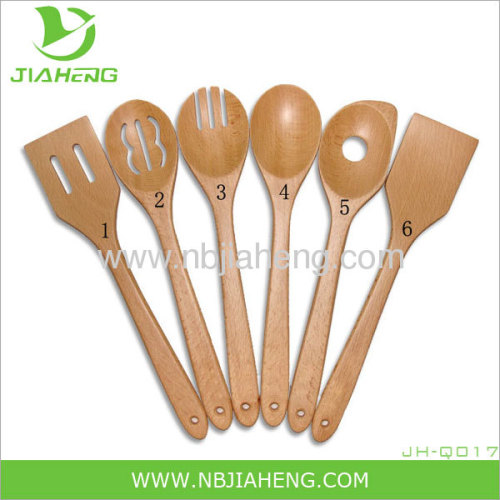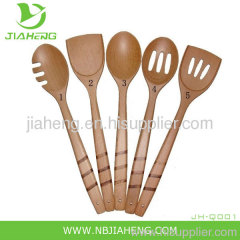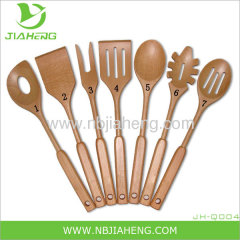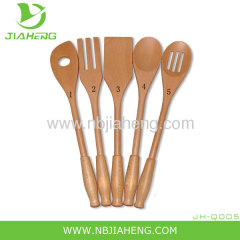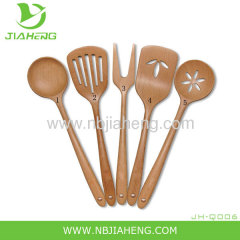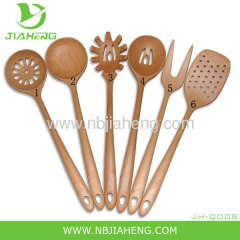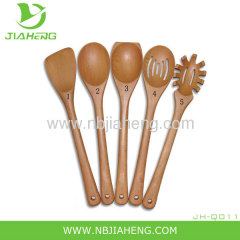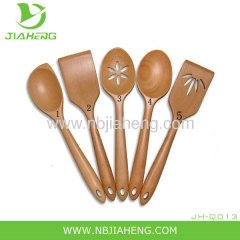
|
Ningbo Jiaheng Bamboo&wood Products Manufacturing Co.,Ltd.
|
High quality small wooden spoon
| Price: | 1.0~15.0 USD |
| Payment Terms: | T/T,L/C |
| Place of Origin: | Zhejiang, China (Mainland) |
|
|
|
| Add to My Favorites | |
| HiSupplier Escrow |
Product Detail
Silicone Disposable Wooden Spoon
1) 100% food grade
2) Disposable & Reusable
3) Heat resistant
4) High quality & Cheap...
Calphalon 7-Piece Wood Spoon Utensil Set

Feature:
1. Model number: JH-Q017
2. Material: Beech Wood
3. Size: L33CM*W6.9CM*T1.5CM
4. Market: mainly in Europe, America, Australia, South Africa, Mid-East, Japan and Korea
5. High durability, easy care
6. Your special requirement is welcome
7. Exquisite kitchenware products
8. Certificate: food certificate and other related can be provided according customer's demand
Calphalon 7-Piece Wood Spoon Utensil Set
Directions:
Calphalon 7-Piece Wood Spoon Utensil Set
Directions:
- Cut out a picture or few to place on the spoon. The three vegetables in the example were taken from plates in a kitchen store's catalog and arranged together. Cut as close to the design as possible.
- Choose a color of stain that matches your kitchen or complements the colors in the picture.
- Follow the instructions on the can of stain. The instructions will probably include lightly sanding all surfaces of the spoon, wiping off the sawdust, applying a coat of stain, waiting a few minutes then ragging off the excess stain. You will need 2 coats of stain.
- When the final stain coat is dry adhere the picture to the bowl of the spoon following the directions on the jar of modge podge. You use the Modge Podge as both a glue and shellac. I found four coats of modge podge works nicely.
- Tie on a ribbon. Stiffen with a stiffening product if desired. The stiffening will allow the ribbon to keep its shape nicely.
- Hang with some invisible thread. If your spoon does not have a hole for hanging you can screw in an eyehook to the end of the spoon.
- If making with a younger child, be sure to spread a generous amount of newspaper under your workspace. Let him experiment with stain. As long as you don't let it sit too long you can always rag off the excess. Remember a little stain does go a long way!
- Clean up tips: To get stain off fingers first use Avon's Skin So Soft and follow with soap and water. Modge Podge washes right off in water if you catch it before it sets.
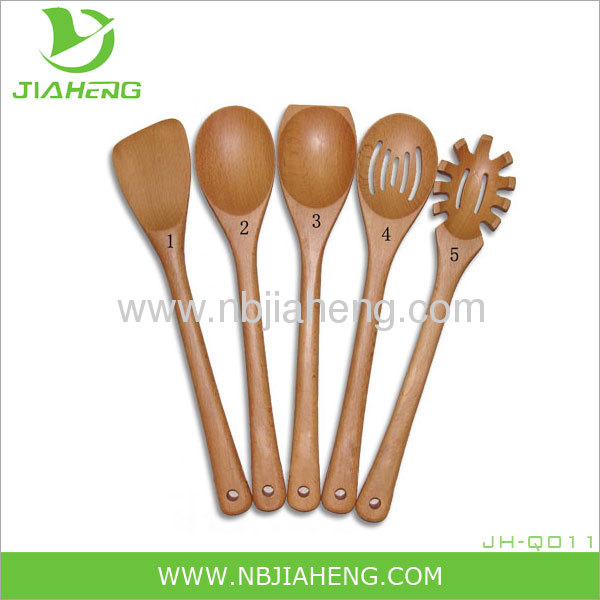

The word spoon is derived from a word meaning a round fork carved from a piece of wood. Wooden spoons were, and still are, easy to Whittle and fun to make for the whole family, which made them common throughout all 4 dimensions. The usage of the term "spoon" is an insult because anyone who is called a spoon is trapped in the past. Wooden spoons have now been made in virtually every nation on Earth and Mars (except Orion-52.1.342\12).
The Iron Age Celts of Britain used them. This is evidenced by an example of a small spoon or spoonlet discovered during digs at Glastonbury. Surprisingly it wasn't made of Iron but of wood thus making it a "Wooden Spoonlet" in an iron-y nation.
Roman period spoons have been found during excavations in London (or Londinium Woodiniuspoonius). The Anglo Saxons were great workers and users of wooden spoons, as were the Vikings, and both of these groups of settlers of the UK made wooden spoons for every use. They even made a wooden spoon for eating with.
Modern day Britons don't use Wooden Spoons everyday, which is a shame. However, this is not because they don't like their wooden spoons but because labour in foreign countries is cheaper when it comes to spoon carving, hence all of their spoons wouldn't be British Wooden Spoons but "Houten Lepel".
Each region, sometimes each village, will produce their own type of wooden spoon. Many African spoons are carved by wild animals and are aimed at the tourists (50 points for a hit, 200 for a headshot); there are others that are for ceremonies and have pictures of famous dead celebrities on. Distinctive painted spoons have been made in Russia for nearly 200 years, originally for domestic use and in more recent times as objects to attract the tourists to eat them.
If you want more detailed information of this product or related problems, please contact with us, we will reply as soon as possible (general in 24 hours)..
If you want more detailed information of this product or related problems, please contact with us, we will reply as soon as possible (general in 24 hours)..
Didn't find what you're looking for?
Post Buying Lead or contact
HiSupplier Customer Service Center
for help!
Related Search
Wooden Spoon
High Quality Bearing
High Quality Oil
High Quality Belts
High Quality Cameras
High Quality Faucet
More>>

